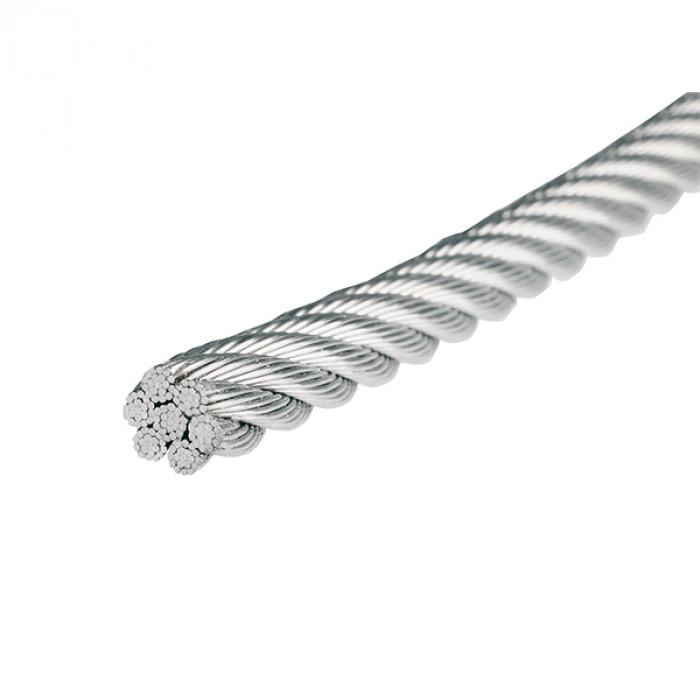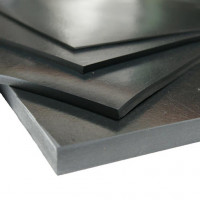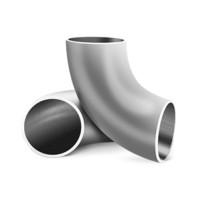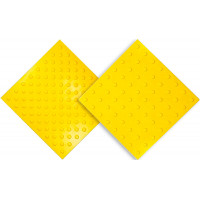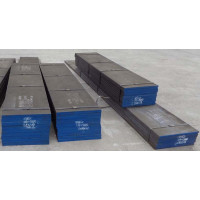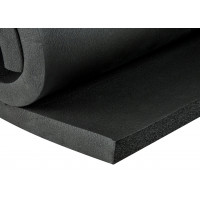Stainless steel cable 7x19 DIN 3060 is a rope-rope type fastener, which is made of stainless metal. The cable consists of a core and a metal braid, which increases the tensile strength. It is important to buy a stainless steel cable for use in various fields of activity. It is used in well pump construction, on yachts and other sailing vessels, and in places with high levels of humidity.
Performance characteristics
Stainless steel cable is produced by drawing wire rod from steel of the appropriate type. For the corrosion resistance of the material, two grades of steel are used: AISI 304 and AISI 316. You can order a cable in a section diameter from 1 to 10 millimeters. Products are stored in coils, which allows you to cut any length. Depending on the steel grade used in the production, the configuration is different.
cable stainless aisi buy price Kyiv
The special operating conditions of products made of AISI 316 steel grade should be highlighted. Given the composition of the material, cables of this category withstand the effects of salt water, acids, alkalis and fresh water. Therefore, AISI 316 stainless steel cable for a borehole pump is the best solution. The maximum temperature at which the cable retains its primary operational properties is 950 degrees Celsius
A stainless steel cable is a product made of stainless steel, which is twisted or twisted steel strands, and may have a flexible core. It is used for stretching or lifting loads. The rope is resistant to temperature changes, moisture, withstands heating temperatures up to 250 degrees Celsius.
Stainless steel cables are made of A2 or A4 steel grade. The first type is resistant to moisture, but can be destroyed in more aggressive operating conditions, the second, due to the addition of molybdenum to its composition, works without destruction in salt water, alkaline, acidic environments. As part of stainless steel ropes, it provides them with the flexibility and elasticity of the ropes, wear resistance.
Depending on the purpose and design of the cross-section of the product, stainless cables for stretching and lifting are distinguished. The former have high tensile strength, sufficient flexibility and a low elongation coefficient. The flexibility of the product depends on the presence of the core and the design of the rope itself. They are made of stainless steel and have a galvanized coating, which significantly increases their operational period, protects against aggressive environmental influences. They are used for installation work, cable suspension, securing loads and structures, rigging, stretching.
Lifting ropes are used for transporting and lifting loads, as well as performing lifting operations of varying complexity, such products are considered the most durable type of ropes. They are made with various types of cross-section, differing in the amount of wire used, the presence of a core and the laying method. Manufactured from uncoated or galvanized wire.
Advantages of stainless steel ropes:
long operating period;
the possibility of using outdoors;
resistance to temperature influences;
lack of corrosion during prolonged contact with fashion or acidic environments;
high strength;
great wear resistance.
Stainless ropes are used to solve the following problems:
installation and rigging works;
suspension of cables, fences, structural elements, equipment and mechanisms;
securing cargo, structures;
stretch marks;
lifting and transportation of goods;
solution of domestic and industrial problems;
as a lifting and lifting device.
When selecting a stainless steel cable, consider the following characteristics:
The choice of product design depends on the weight of the structure or equipment that the rope will lift, as well as its operating conditions. Manufacturers indicate the GOST or DIN standard to which the product complies. This documentation indicates the scope of the cable, as well as the diameter, its design and tensile strength. The cross section of the cable is selected so that it does not break from the applied force.
Terms of Use. If the contact of the rope with salt water or acidic, alkaline environments is expected, then stainless products of the A4 grade are used. For use in environments with high humidity, ropes of grades A2, A4 can be used.
The choice of rope is also influenced by the equipment on which it will be used, for example, hoist manufacturers indicate the desired diameter of the ropes.
When installing the cable on a roller, drum or winding place, it is necessary that it does not come into contact with sand, dust and other abrasive particles. Therefore, it is forbidden to unwind the rope by rolling the reel or coil. For their normal operation, stainless steel cables are securely fixed on the locking mechanisms, installed according to the hopping scheme, observing the safety requirements.
The structure of the rope includes the followinge components: core, strand, wire, center wire. Most often, each individual wire is located around the center wire, forming a strand of wire.
The strands are formed around a central core to form a rope. Depending on the number of strands, the thickness of the cables is determined. There are quite a lot of them, but there is a limit on the number of threads - 25. The size and number of wires in each strand, as well as the size and number of strands in the rope, greatly affect the characteristics of the rope.
Preferably, a large number of wires and strands of small size form flexible cables with good bending resistance. Such options are suitable for organizing triggers.
Fewer thicker wires and strands are inherent in a less flexible rope with good corrosion resistance and durability. This option is suitable for use in static conditions. Rope design is also important in evaluating ropes for corrosion resistance, wear and tear.
Types of cores in steel cables
Cables come with three types of cores:
A core made of wire, which has the same construction as the outer strands.
The fiber core is more often used for rigging. Such cables have high tensile strength, and due to the increased diameter of the wire, they are more resistant to abrasion. For the manufacture of such cables, sisal (coarse fiber) or polypropylene are most often used. This makes it possible to provide a flexible base for the strands in the rope structure. Fiber cores are used to make ropes where elasticity is required. Fiber cores are not suitable for outdoor applications.
Independent steel core rope. This type is suitable for the manufacture of cables that are used in tension, subjected to severe compressive loads, high operating temperatures. This type of rope is heavier and stronger than fiber core rope.
Laying in steel cables
The lay in metal cables determines how the wire in the strands forms the structure of the rope. In simple words, the wire strands have a twisting algorithm that provides a tightly formed structure. The term "lay" is used to describe the direction of the stranded wire in relation to the strands in the finished cable. With the correct twist, the strands are wound around the core of the rope in a clockwise direction, with left-handed or right-handed - counterclockwise.
The normal lay means that the wire in the strand is laid in the opposite direction to the direction in which the strands are laid in the final rope. The lay direction of the cable rope does not affect the breaking strength of the cable. However, the combination of strand lay and rope lay greatly affects the characteristics of the rope. For example, if we are talking about a rope structure where rotation is prevented with right-handed and left-handed strands involved.
Rope product classification
Steel cable is widely used, there is a wide range of products on the market. There are several classifications of metal cables:
by appointment;
according to the shape of the sections;
the number of strands in the rope, which determines its scope;
the material of the main element - the core;
wire properties;
the direction of the strands in the structure is left-handed, right-handed;
type of wire processing;
species and genus of vitya.
To determine the nominal diameter of the cable, you need to make measurements in two sections. There should be a distance of 1 m between them. In sections, the diameter is measured twice along the line of the maximum distance between the limit points.
Quality and variety of cable material
The quality of the steel used determines the tensile strength of the rope. Modern production technologies offer consumers durable products with anti-corrosion resistance, resistance to external factors. Steel wire ropes are commonly available on the market in tension ranges from 1570 to 2160 N/mm square.
Galvanized ropes are made from galvanized material for corrosion protection. For the use of heavy equipment (eg winches, mining machines) there is a demand for the manufacture of ropes with an increased tension range of the rope wire. On the other hand, since strength is not the only criterion when choosing a rope, it is important to evaluate the specific conditions of use of the ropes.
Stainless steel is the most popular material for cable production. Since products made from it can be used in harsh climatic conditions, this indicates a high protection against corrosion. Stainless steel has high tensile strength and is considered suitable for almost any environment. Modern steel processing methods mean that stainless steel can be cut, welded, shaped and produced quite easily. The flexibility of cables made from this type of material means that steel can be used to produce products of any size and shape.
There are many different grades of stainless steel, depending on the content of alloying elements, andalso their mechanical properties and corrosion resistance. They are designated in the marking according to GOST and other international standards.
It is important to consider environmental factors when choosing a grade of stainless steel for a rope. There are methods for classifying environmental factors that allow you to choose a brand for a more accurate application.
Purpose of steel cables
Rope products are designed for lifting and moving heavy structures. The lifting steel cable is also capable of performing the following tasks:
moving cargo on tower or container cranes;
retention of crane structures;
installation and dismantling of cranes and others.
If you need to manipulate an unguided load or lift it to a great height, you will need ropes that are resistant to rotation. Only they ensure the stability of the load, so the load is able to rotate. Rotation-resistant ropes attached to the crane structure do not transmit torque to the anchor point. Due to this, it is possible to ensure the safety of work. These types of ropes have production requirements in accordance with GOST standards. They differ in the level of resistance to rotation depending on the type of structure.
There are several conditions where the use of rotation-resistant ropes is inappropriate and unjustified. For example, if ropes of the same design are used as a pair consisting of right-handed and left-handed ropes. In this case, the stability of rotation is ensured, so the load does not rotate. This is explained by the balance of torque.
Rotation resistant ropes are not as prone to bending. Therefore, if in a particular situation elastic compounds are needed, then you should not dwell on this type of cable. Evaluate the conditions of use of ropes and the risks of using different types of products.
Deformation and wear of ropes
Most often, wire connections are destroyed due to stretching, corrosion or mechanical stress. If breaks are found under loads on it is important to check the level of safety, especially if the rope is used for heavy loads.
Corrosion damage occurs as a result of operation in wet, salty, acidic conditions or when exposed to other chemical elements. In this case, you need to make every effort to fix the problem. Alternatively, you can use a special lubricant.
Mechanical damage is cuts or punctures. This is due to careless handling, impact. Also, mechanical rupture occurs due to a sharp release from a large weight.
Rope strength failure often occurs as a result of bending wear. The reasons for the abrasion of the strands can be:
bending and twisting of the ropes due to the load;
contact stresses between individual strands;
wind fluctuation and other dynamic effects. The source of the oscillation is called the "reclaimer".
When choosing a cable for specific purposes, it is important to pay attention to the quality of the material and its properties. If you intend to use the rope in harsh environments, be sure to lubricate the product. Steel cables are a complex engineering object, the choice of which must be approached wisely.
You can buy Stainless steel cable 7x19 DIN 3060 from us at the best price in Ukraine. A wide range of products allows us to quickly and efficiently fulfill any order, helping to complete any construction work on time.
No questions about this product, be the first and ask your question.

